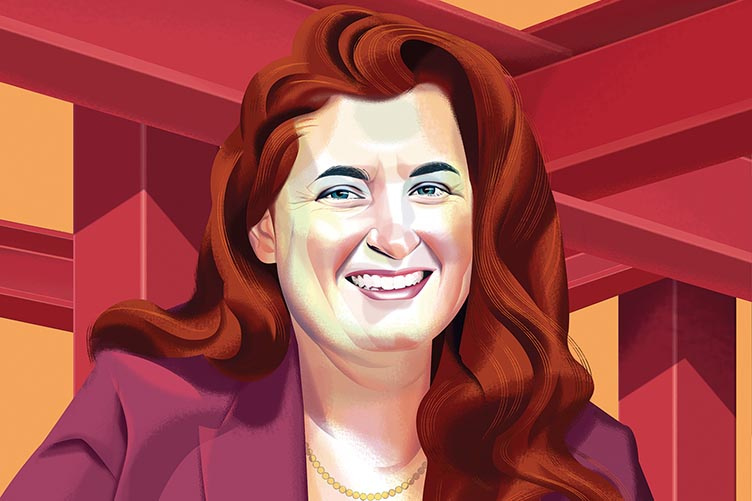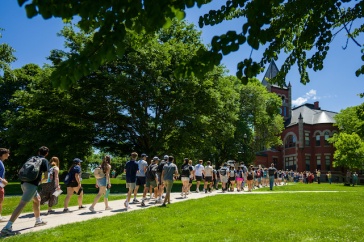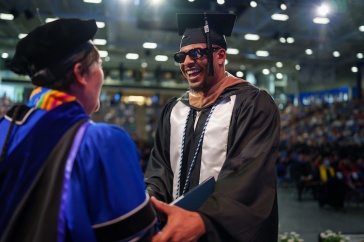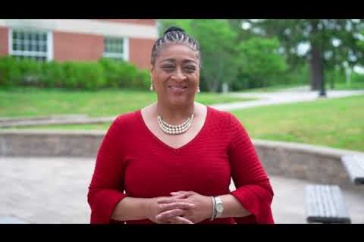
Illustration by Nigel Buchanan/Rapp Art
I am the granddaughter of an Italian village blacksmith. My grandfather, born in the mountains of Tuscany, had a small forge and learned to weld in a German work camp during World War II. When the war was over, he came to the United States and looked for work as an iron worker. My father was a steel fabricator and started Santini Brothers Iron Works in Medford, Massachusetts, in 1969. I worked at ‘the shop,’ as we called it, when I was in high school. I could read structural plans and selected the steel elements for bidding.
When I was 14, my father took me to a Bruins game. We went to dinner at a small restaurant in the North End before the game. Dad asked me what I was thinking about for college and a career. I had no idea. He said, ‘Why don’t you be an engineer?’ The restaurant had exposed timbers, and he pointed to one and said, ‘See that beam?’ And then he told me engineers figured out how many beams were needed in a building, how long they needed to be, how much weight they could bear.
The Bruins game was in the old Boston Garden, with exposed steel framing, and I spent most of the time looking up at the steel instead of watching the game. I was so fascinated that you could use math and science to do these things. That was it for me.
Once when I was home for break, I went over to Tufts and was looking at the job posting boards. Professor Masoud Sanayei, the head of the structures group in civil engineering, asked if I needed help. I said I was interested in graduate school because I was embarrassed to be caught looking at job postings since I was not a student there. He told me about a research project he was doing monitoring bridge structure health and said he had an opening for a graduate research assistant, that it would pay my tuition and provide a stipend. I went home and started my application for graduate school at Tufts right then — something that was not even on the radar a few days prior.
I ended up staying on for my Ph.D. I was interested in the bridge work, but I always thought I would one day take over Santini Brothers. After I passed my Ph.D. qualifying exam I got a job as a structural engineer. I was working designing buildings during the day and doing doctoral research on bridges at night. Professor Sanayei encouraged me to apply for an academic position. He said, ‘Academia will be missing out if you don’t do this.’ UNH had an opening — I was the very last person to apply.”
Since then Bell, who is her department chair, has been involved with the Living Bridge project that is using the Memorial Bridge that spans the Piscataqua River between Portsmouth, New Hampshire, and Kittery, Maine, to gather information on such things as structural performance, wind patterns, tidal current, water turbidity and fish migration patterns.
-
Written By:
Jody Record ’95 | Communications and Public Affairs | jody.record@unh.edu



















































